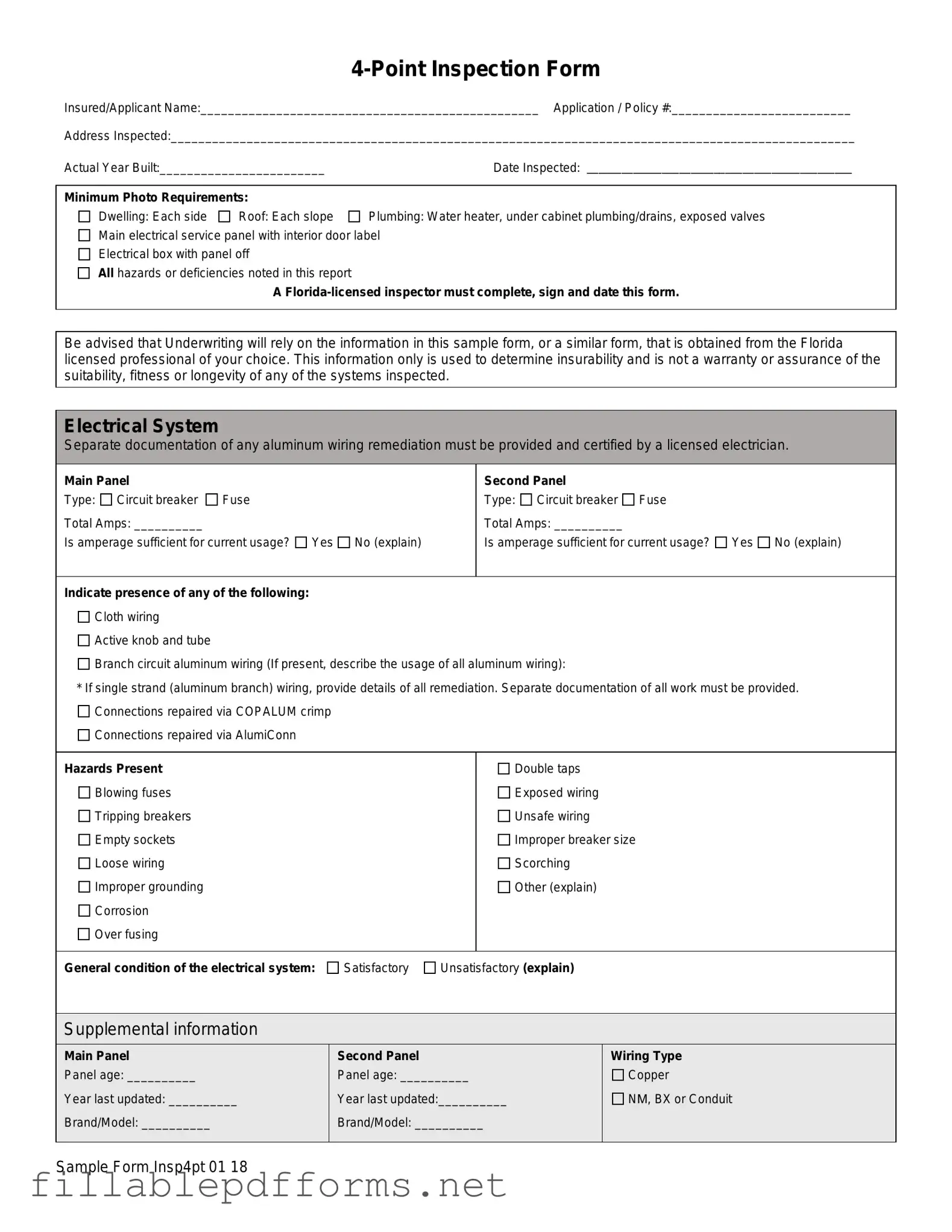The 4 Point Inspection form serves as a crucial tool in assessing the condition of key systems within a property, specifically the roof, electrical, HVAC, and plumbing systems. This form is typically required by insurance companies to evaluate a property's insurability. Each section of the form demands detailed information, including the age and condition of the systems, any visible hazards, and necessary documentation. For instance, the electrical section must note the type of wiring present and any remediation completed, while the plumbing section requires insights into potential leaks and the condition of fixtures. Additionally, the HVAC section assesses the functionality of heating and cooling systems, ensuring they are in good working order. Photographic evidence is also mandated, capturing each side of the dwelling, the roof slopes, and critical plumbing and electrical components. The form must be completed, signed, and dated by a licensed inspector in Florida, emphasizing the importance of professional oversight in this process. Ultimately, the 4 Point Inspection form not only aids insurers in making informed decisions but also provides homeowners with a comprehensive overview of their property's condition, highlighting areas that may require attention.
